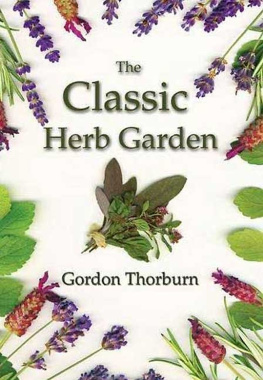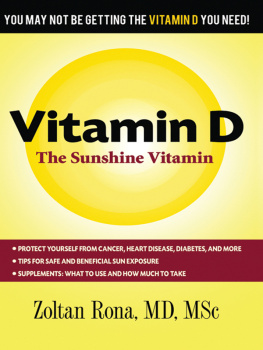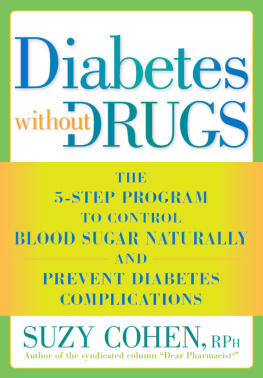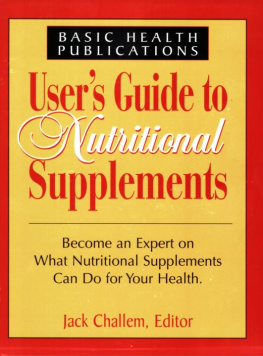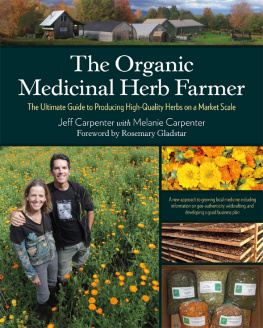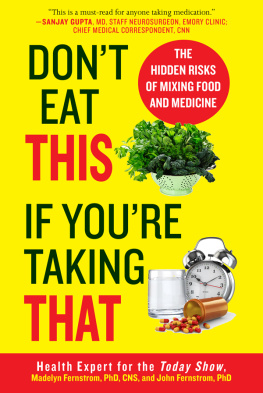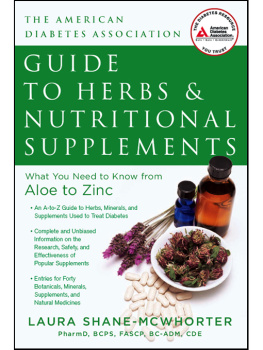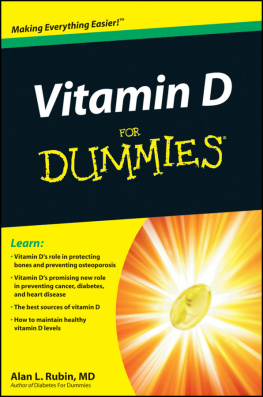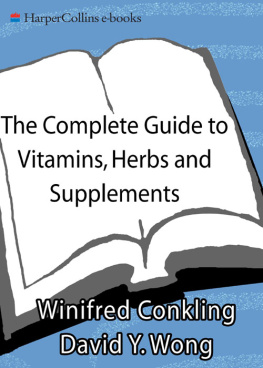Acknowledgments
I would like to acknowledge Barry Fox, my coauthor, who has the unique ability to make complex things clear to intelligent laypeople, and my wife, Darla, for being such a great mother and wife and enabling me to work on book projects such as this.
A BOUT THE A UTHORS
G EORGE T. G ROSSBERG , M.D., is a professor of geriatric psychiatry at St. Louis University School of Medicine. As a specialist who works with older patients, Dr. Grossberg sees the effects of herb-drug interactions firsthand. Dr. Grossberg has been cited online by his peers in Best Doctors in America and in America's Top Docs since their inception. His work has been highlighted in People, Reader's Digest, Good Housekeeping, and USA Today, and he has appeared on CNN, Lifetime Television, The Sally Jessy Raphael Show, 48 Hours, and elsewhere.
B ARRY F OX , PH.D., is the bestselling author, coauthor, or ghostwriter of numerous health books, including the number-one bestselling The Arthritis Cure, The Side Effects Bible, and Alternative Cures That Really Work. He lives in Calabasas, California.
ALSO BY BARRY FOX, PH.D.
WITH FREDERIC VAGNINI, M.D
The Side Effects Bible
WITH JASON THEODOSAKIS AND BRENDA ADDERLY
The Arthritis Cure
How to Use This Book
T his is not an anti-herb or anti-medicine book.
Herbs can be useful as health aids, and medicines can be lifesavers. We're both pro-herb and pro-medicine, and eager to see both types of remedies used properly, safely, and efficaciously, whether taken alone or together. That's why we're offering you the information in this booknot to say you should or should not take a certain medicine or herb, but to help you take both more safely and effectively.
In this book, you'll learn about many of the ways herbs can interact with drugs, vitamins, lab tests, diseases, foods, and other supplements. If you're going to combine an herb with any of these, look up the herb in this book and see if there are any interactions. Then discuss them with your physician.
Simply look up the herb you're takingthey're listed alphabetically in Chapter 2. In the listing for each herb, you'll find a brief introduction to the herb, information about side effects and other matters, then listings of potential interactions: with drugs, laboratory tests, diseases, foods, and other supplements. The drugs are listed alphabetically by generic name, with one or two of the brand names used in the United States or other countries immediately following in parentheses.
As you read through the book you'll see references to Germany's Commission E, the Food and Nutrition Board, RDAs, Adequate Intake, and Tolerable Upper Intake Level. Here's some information on each:
Germany's Commission E is an official government body charged with investigating and publishing information on the safety and effectiveness of numerous herbs. Some people liken this commission to the U.S. Food and Drug Administration, calling it an FDA for herbs.
The Food and Nutrition Board, which is part of the U.S. government's Institute of Medicine, develops and publishes nutritional recommendations, such as the RDAs.
RDA stands for Recommended Dietary Allowance. The RDA is the amount of a nutrientsuch as vitamin C or the mineral seleniumthat most healthy people need to consume every day.
The Adequate Intake (AI) is a recommendation for how much of a nutrient healthy people need to consume every day. It's used in place of an RDA and is like an RDA, but it's an approximation based on less scientific evidencebecause the evidence needed to establish an RDA isn't available.
The Tolerable Upper Intake Level (UL) is the largest amount of a nutrient that can safely be consumed every day by almost everyone in a healthy population.
You'll also come across some words and abbreviations used in the discussions of herbs and nutrients. Here are some quick definitions:
Aerial parts are the parts of the herb that grow above ground.
The concentration is a ratio describing the amount of herb compared to the amount of solvent used to make an herbal preparation. For example, in a tincture with a 1:8 concentration, there's 1 part of the herb (measured in grams) for every 8 parts of the solvent (measured in milliliters).
Crude herb is the raw, unprocessed plant from which a processed herb is produced.
Essential oils are volatile aromatic oils extracted from an herb.
An extract is a concentrated form of the herb, made by mixing the crude herb with water or another solvent, then distilling or evaporating.
Gm stands for gram, a unit of measurement for dry weight.
An infusion is made by steeping the leaves, flowers, or other parts of a plant in water that is just below the boiling point. Tea is an infusion.
IU stands for International Unit, a unit of measurement used for some nutrients such as vitamin E.
Mcg stands for microgram, a unit of measurement for dry weight.
Mg stands for milligram, a unit of measurement for dry weight.
Ml stands for milliliter, a unit of measurement for liquid volume.
A poultice is made by wrapping moistened crushed leaves or other plant parts in a cloth and applying it to the body.
A rhizome is a plant stem that grows in a horizontal pattern underground and produces buds.
A tincture is a liquid herbal extract made by soaking the herb in water, alcohol, or another fluid, then straining the liquid and discarding the plant material.
This book is extensive but by no means complete. It cannot be, for researchers are constantly learning more about herbs, and our knowledge of the ways they interactfor better or worsewith medicines, lab tests, diseases, foods, and other supplements is growing all the time. Given space limitations, we had to confine ourselves to only three hundred herbs and supplements. This book is a good starting point as a basis for discussion with your physician. If you're taking any herbs, ask your physician whether there are any interactions you should know about to ensure that the herbs you take are used properly, safely, and most effectively.
A FINAL NOTE: Sometimes you'll see that an herb increases a medicine's effect, or vice versa. In some cases, that might be beneficialindeed, some people may take certain herbs as adjuncts to specific medicines. However, we do not indicate which cases may be helpful or not because that depends on many factorsand there's always the possibility that increasing a drug's action may make it too powerful and raise the risk of side effects. That's why we simply indicate which interactions may occur and leave it up to you and your physician to determine if that is helpful, neutral, or harmful.
Appendix A
Which Are the Most Popular Herbs?
T o be honest, nobody can say with absolute certainty which herbs are the most popular. We can make very educated guesses, however, by looking at the sales figures. Unfortunately, herbs are sold through a great many channels, including natural food stores, doctor's offices, Wal-Mart, Asian markets, multilevel marketing companies, and vitamin stores. No one has yet gathered together all the sales data from the myriad sources to come up with figures covering all the sales of herbs in the United States.
Here are the top-ten-selling herbal supplements in the United States, according to HerbalGram.buying clubs. And these figures track the sales of individual herbal supplements, not multiherb combination products that contain two or more herbs.


